
Keywords: mammals

|
A framework for identifying fertility gene targets for mammalian pest controlC. C. Anna, A. Alana, E. Rey, E. Kevin, K. Sebastian, D. Ludovic, C. Jackson, E. C. Samuel, W. M. Philipp and J. G. Neil, bioRxiv, 2023.05.30.542751. 2023.
Fertility-targeted gene drives have been proposed as an ethical genetic approach for managing wild populations of vertebrate pests for public health and conservation benefit. This manuscript introduces a framework to identify and evaluate target gene suitability based on ... Keywords: conservation, CRISPR, gene drive synthetic, mammals, model, synthetic homing drive |
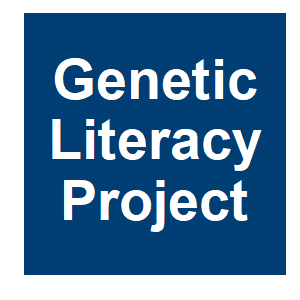
|
Social justice environmental activists move to block gene editing to control invasive species and promote biodiversity. Here’s why they’re misguidedS. Smyth, Genetic Literacy Project, 2023.
Control of invasive species has been extremely difficult with eradication virtually impossible. To control invasive plant species, chemicals are commonly used while in some instances removal of plants by hand, as Shiva advocates, is undertaken. Efforts to control invasive animals ... Keywords: conservation, CRISPR, gene drive synthetic, mammals, model, synthetic homing drive |
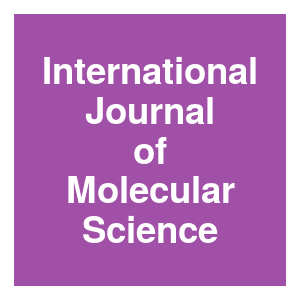
|
Bypassing Mendel’s First Law: Transmission Ratio Distortion in MammalsG. Friocourt, A. Perrin, P. A. Saunders, E. Nikalayevich, C. Voisset, C. Coutton, G. Martinez and F. Morel, International Journal Molecular Sciences, 24. 2023.
Mendel's law of segregation states that the two alleles at a diploid locus should be transmitted equally to the progeny. A genetic segregation distortion, also referred to as transmission ratio distortion (TRD), is a statistically significant deviation from this rule. TRD has ... Keywords: conservation, CRISPR, gene drive synthetic, mammals, model, synthetic homing drive |
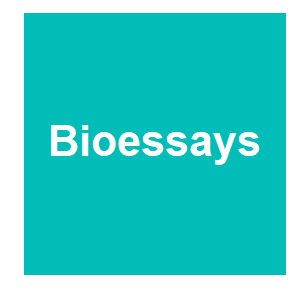
|
Meiotic defects in human oocytes: Potential causes and clinical implicationsT. Wu, H. Gu, Y. Luo, L. Wang and Q. Sang, BioEssays, 2022.
Meiotic defects cause abnormal chromosome segregation leading to aneuploidy in mammalian oocytes. Chromosome segregation is particularly error-prone in human oocytes, but the mechanisms behind such errors remain unclear. To explain the frequent chromosome segregation errors, ... Keywords: conservation, CRISPR, gene drive synthetic, mammals, model, synthetic homing drive |

|
Selfish evolution of placental hormonesG. Keegan and M. M. Patten, Evolution, Medicine, and Public Health, 10:391-397. 2022.
We hypothesize that some placental hormones—specifically those that arise by tandem duplication of genes for maternal hormones—may behave as gestational drivers, selfish genetic elements that encourage the spontaneous abortion of offspring that fail to inherit them. Such ... Keywords: conservation, CRISPR, gene drive synthetic, mammals, model, synthetic homing drive |

|
Genetically-enhanced biocontrols can help fight large invasive mammalsPensoft Publishers, Science Daily, 2022.
A team of researchers from the University of Adelaide developed a mathematical model able to simulate the impact of gene drives on mammal populations at a landscape scale. Published in the open-access NeoBiotajournal, their study is the first to estimate the time it would take to ... Keywords: conservation, CRISPR, gene drive synthetic, mammals, model, synthetic homing drive |
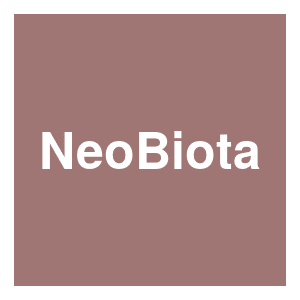
|
Scalability of genetic biocontrols for eradicating invasive alien mammalsA. Birand, P. Cassey, J. V. Ross, P. Q. Thomas and T. A. A. Prowse, NeoBiota, 74:93-103. 2022.
CRISPR-based gene drives offer novel solutions for controlling invasive alien species, which could ultimately extend eradication efforts to continental scales. Gene drives for suppressing invasive alien vertebrates are now under development. Using a landscape-scale ... Keywords: conservation, CRISPR, gene drive synthetic, mammals, model, synthetic homing drive |

|
Selfish centromeres and the wastefulness of human reproductionL. D. Hurst, PLOS Biology, 20:e3001671. 2022.
Many human embryos die in utero owing to an excess or deficit of chromosomes, a phenomenon known as aneuploidy; this is largely a consequence of nondisjunction during maternal meiosis I. Asymmetries of this division render it vulnerable to selfish centromeres that promote their ... Keywords: conservation, CRISPR, gene drive synthetic, mammals, model, synthetic homing drive |
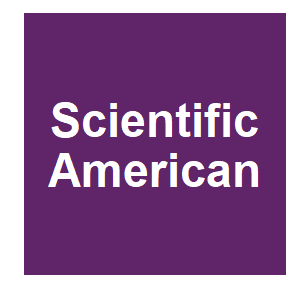
|
Track New Zealand’s Bid to Take Back NatureK. Peek, Scientific American, 2022.
A thousand years ago the islands that today form New Zealand were riotously wild. Birds, reptiles and invertebrates flourished in lush forests hundreds of miles from any other landmass. Māori settlers in the 1200s brought Polynesian rats for food, and together the humans and the ... Keywords: conservation, CRISPR, gene drive synthetic, mammals, model, synthetic homing drive |
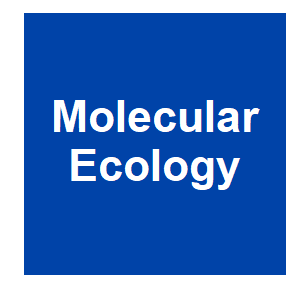
|
Gene drives for vertebrate pest control: realistic spatial modelling of eradication probabilities and times for island mouse populationsA. Birand, P. Cassey, J. V. Ross, J. C. Russell, P. Thomas and T. A. A. Prowse, Molecular Ecology, 2022.
Abstract Invasive alien species continue to threaten global biodiversity. CRISPR-based gene drives, which can theoretically spread through populations despite imparting a fitness cost, could be used to suppress or eradicate pest populations. We develop an individual-based, ... Keywords: conservation, CRISPR, gene drive synthetic, mammals, model, synthetic homing drive |
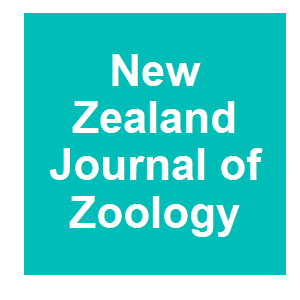
|
Alternatives for mammal pest control in New Zealand in the context of concerns about 1080 toxicant (sodium fluoroacetate)B. Warburton, C. Eason, P. Fisher, N. Hancox, B. Hopkins, G. Nugent, S. Ogilvie, T. A. A. Prowse, J. Ross and P. E. Cowan, New Zealand Journal of Zoology, 43. 2021.
The ongoing use of 1080 toxin for the control of mammal pests in New Zealand remains highly contentious. Several reviews over the last 25 years identified information gaps and areas of concern, both social and scientific. In this paper these areas of concern are discussed and the ... Keywords: conservation, CRISPR, gene drive synthetic, mammals, model, synthetic homing drive |
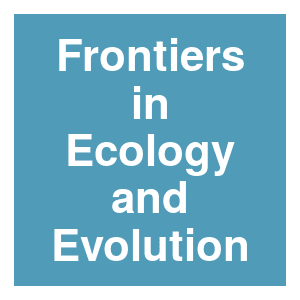
|
The Promise of Genetics and Genomics for Improving Invasive Mammal Management on IslandsB. T. Burgess, R. L. Irvine, G. R. Howald and M. A. Russello, Frontiers in Ecology and Evolution, 9. 2021.
Invasive species are major contributors to global biodiversity decline. Invasive mammalian species (IMS), in particular, have profound negative effects in island systems that contain disproportionally high levels of species richness and endemism. The eradication and control of ... Keywords: conservation, CRISPR, gene drive synthetic, mammals, model, synthetic homing drive |
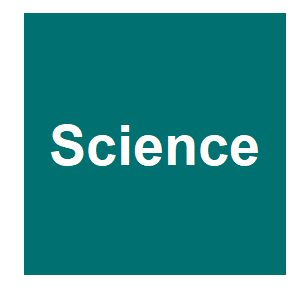
|
Widespread haploid-biased gene expression enables sperm-level natural selectionK. Bhutani, K. Stansifer, S. Ticau, L. Bojic, A.-C. Villani, J. Slisz, C. M. Cremers, C. Roy, J. Donovan, B. Fiske and R. C. Friedman, Science, eabb1723. 2021.
Here, we show that a large class of mammalian genes are not completely shared across these bridges. We term these genes “genoinformative markers” (GIMs) and show that a subset can act as selfish genetic elements that spread alleles unevenly through murine, bovine, and human ... Keywords: conservation, CRISPR, gene drive synthetic, mammals, model, synthetic homing drive |
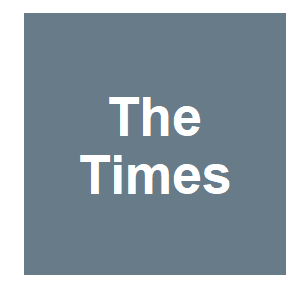
|
First they cloned Dolly the sheep. Now they’re targeting grey squirrelsLeake, J., The Times, 2020.
For 150 years they have wreaked havoc on Britain’s woods and wildlife, but the destructive reign of the grey squirrel could soon be over — ended by DNA editing to ensure that all future females are born infertile. Researchers at the Roslin Institute, the genetics laboratory ... Keywords: conservation, CRISPR, gene drive synthetic, mammals, model, synthetic homing drive |
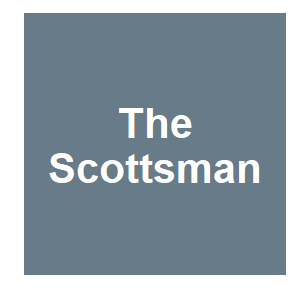
|
Dolly the sheep scientists hope DNA editing can wipe out grey squirrelsMcLaughlin, M., The Scotsman, 2020.
They have been poisoned, shot at, and stumbled into traps laid by those who regard them as a ruinous blight on the country’s woodland and wildlife. But now, the grey squirrel is facing arguably its biggest threat yet, with plans to harness the cutting edge of genetic science ... Keywords: conservation, CRISPR, gene drive synthetic, mammals, model, synthetic homing drive |
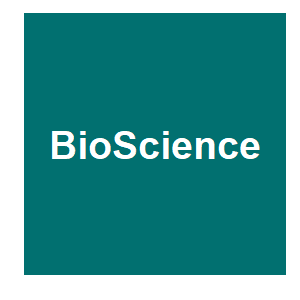
|
Genetically engineering wild mice to combat Lyme disease: An ecological perspectiveSnow, A. A., BioScience, 69:746-756. 2019.
Genetic engineering of wild populations has been proposed for reducing human diseases by altering pathogens’ hosts. For example, CRISPR- based genome editing may be used to create white-footed mice (Peromyscus leucopus) that are resistant to the Lyme disease ... Keywords: conservation, CRISPR, gene drive synthetic, mammals, model, synthetic homing drive |

|
How gene drives could transform pest controlTEDx Youth, , 2019.
In New Zealand, 25 million native birds are killed each year by introduced predators. New Zealand has an ambitious goal to be predator free by the year 2050; however, current pest control methods will not achieve this goal. In this thought-provoking and compelling talk, ... Keywords: conservation, CRISPR, gene drive synthetic, mammals, model, synthetic homing drive |
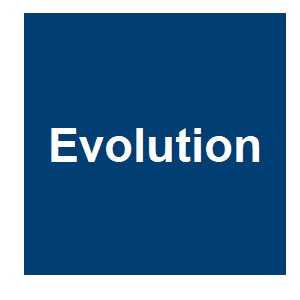
|
Meiotic drive shapes rates of karyotype evolution in mammalsBlackmon, H., J. Justison, I. Mayrose and E. E. Goldberg, Evolution, 73:511-523. 2019.
Chromosome number is perhaps the most basic characteristic of a genome, yet generalizations that can explain the evolution of this trait across large clades have remained elusive. Using karyotype data from over 1000 mammals, we developed and applied a phylogenetic model of ... Keywords: conservation, CRISPR, gene drive synthetic, mammals, model, synthetic homing drive |

|
Super-Mendelian inheritance mediated by CRISPR-Cas9 in the female mouse germlineGrunwald, HAG, V. M.; Poplawski, G.; Xu, X. R. S.; Bier, E.; Cooper, K. L., Nature, 566:105-109. 2019.
A gene drive biases the transmission of one of the two copies of a gene such that it is inherited more frequently than by random segregation. Highly efficient gene drive systems have recently been developed in insects, which leverage the sequence-targeted DNA cleavage activity of ... Keywords: conservation, CRISPR, gene drive synthetic, mammals, model, synthetic homing drive |
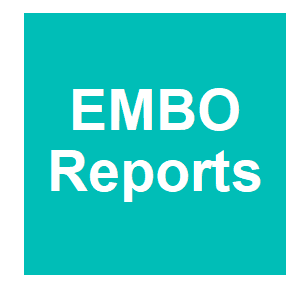
|
A genetic system for biasing the sex ratio in miceYosef, IEB, Liat; Globus, Rea; Shlomovitz, Inbar; Munitz, Ariel; Gerlic, Motti; Qimron, Udi, EMBO reports, 20:e48269. 2019.
Biasing the sex ratio of populations of different organisms, including plants, insects, crustacean, and fish, has been demonstrated by genetic and non-genetic approaches. However, biasing the sex ratio of mammalian populations has not been demonstrated genetically. Here, we ... Keywords: conservation, CRISPR, gene drive synthetic, mammals, model, synthetic homing drive |

|
Genetic manipulation of sex ratio in mammals: the Reaper comes for MickeySmanski, MJZ, David, EMBO reports, 20:e48577. 2019.
In most animals, sexual reproduction results in a 1:1 ratio of females to males. For several sectors of agriculture, for example, milk or egg production, only a single sex is needed. Biasing the sex ratio so that only offspring of the desired sex are produced has the potential to ... Keywords: conservation, CRISPR, gene drive synthetic, mammals, model, synthetic homing drive |

|
CRISPR Gene Drive (Complete guide 2019)Every Cell A Universe, , 2018.
Crispr gene drive - malaria cure and a new way to look at conservation. Keywords: conservation, CRISPR, gene drive synthetic, mammals, model, synthetic homing drive |

|
Gene drive technology considered in the fight to save native animals from feral catsSmail, S, ABC News Online, 2018.
Feral cats kill thousands of native animals every minute — now a controversial plan to use gene drive technology as a weapon against them is being considered by the Federal Government Keywords: conservation, CRISPR, gene drive synthetic, mammals, model, synthetic homing drive |

|
A Framework for the risk assessment and management of gene drive technology in contained usevan der Vlugt, CJBB, David D.; Lehmann, Kathleen; Leunda, Amaya; Willemarck, Nicolas, Applied Biosafety, 23:25-31. 2018.
The utilisation of the CRISPR/Cas9 technology has sparked a renewed interest in gene drive mechanisms. These mechanisms of biased inheritance may yield promising applications in the fields of vector control and nature conservation. However, the same properties that will enable ... Keywords: conservation, CRISPR, gene drive synthetic, mammals, model, synthetic homing drive |
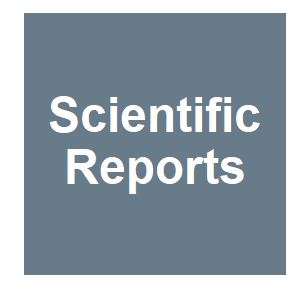
|
Switchable genome editing via genetic code expansionSuzuki, TA, Maki; Patel, Sanjay G.; Luk, Louis Y. P.; Tsai, Yu-Hsuan; Perry, Anthony C. F., Scientific Reports, 8:10051. 2018.
Multiple applications of genome editing by CRISPR-Cas9 necessitate stringent regulation and Cas9 variants have accordingly been generated whose activity responds to small ligands, temperature or light. However, these approaches are often impracticable, for example in clinical ... Keywords: conservation, CRISPR, gene drive synthetic, mammals, model, synthetic homing drive |
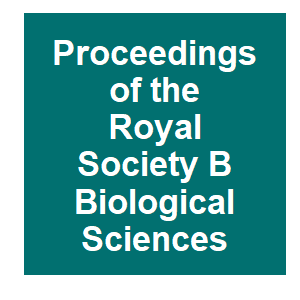
|
Correction to ‘Dodging silver bullets: good CRISPR gene-drive design is critical for eradicating exotic vertebrates’Prowse, TAAC, Phillip; Ross, Joshua V.; Pfitzner, Chandran; Wittmann, Talia; Thomas, Paul, Proceedings of the Royal Society B: Biological Sciences, 285:1-2. 2018.
Proc. R. Soc. B 284, 20170799. (Published Online 9 August 2017). (doi:10.1098/rspb.2017.0799)We recently found an error in our calculation of the probability of a wild-type allele moving from s to j susceptible sites (), and acquiring the gene drive (), during gene-drive homing, ... Keywords: conservation, CRISPR, gene drive synthetic, mammals, model, synthetic homing drive |
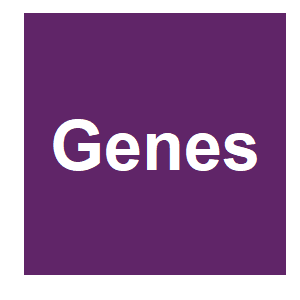
|
B Chromosomes in populations of mammals revisitedVujoševi?, MR, Marija; Blagojevi?, Jelena, Genes, 9:487. 2018.
The study of B chromosomes (Bs) started more than a century ago, while their presence in mammals dates since 1965. As the past two decades have seen huge progress in application of molecular techniques, we decided to throw a glance on new data on Bs in mammals and to review them. ... Keywords: conservation, CRISPR, gene drive synthetic, mammals, model, synthetic homing drive |

|
Dodging silver bullets: good CRISPR gene-drive design is critical for eradicating exotic vertebratesProwse, TAAC, Phillip; Ross, Joshua V.; Pfitzner, Chandran; Wittmann, Talia A.; Thomas, Paul, Proceedings of the Royal Society B: Biological Sciences, 284:20170799. 2017.
Self-replicating gene drives that can spread deleterious alleles through animal populations have been promoted as a much needed but controversial ‘silver bullet’ for controlling invasive alien species. Homing-based drives comprise an endonuclease and a guide RNA (gRNA) that ... Keywords: conservation, CRISPR, gene drive synthetic, mammals, model, synthetic homing drive |
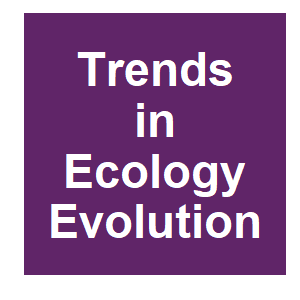
|
Sry gene drive for rodent control: Reply to Gemmell and TompkinsKanavy, DS, M., Trends in Ecology & Evolution, 32:315-316. 2017.
We would like to thank Gemmell and Tompkins for their interest and comments onthe articlebyPiaggioet al. [1].Theissues raised by Gemmell and Tompkins [2] are very pertinent, and they correctly identified that the format of the article did not lend itself to a comprehensive ... Keywords: conservation, CRISPR, gene drive synthetic, mammals, model, synthetic homing drive |

|
Genetic engineering to eradicate invasive mice on islands: modeling the efficiency and ecological impactsBackus, GAG, K., Ecosphere, 7:e01589. 2016.
Invasive rodents are usually eradicated from islands through the application of chemical toxicants that can harm surrounding ecosystems. A recently proposed alternative involves engineering a house mouse (Mus musculus) to carry a genetic construct that would cause a majority of ... Keywords: conservation, CRISPR, gene drive synthetic, mammals, model, synthetic homing drive |

|
The dawn of active geneticsGantz, VMB, E., Bioessays, 38:50-63. 2016.
On December 18, 2014, a yellow female fly quietly emerged from her pupal case. What made her unique was that she had only one parent carrying a mutant allele of this classic recessive locus. Then, one generation later, after mating with a wild-type male, all her offspring ... Keywords: conservation, CRISPR, gene drive synthetic, mammals, model, synthetic homing drive |
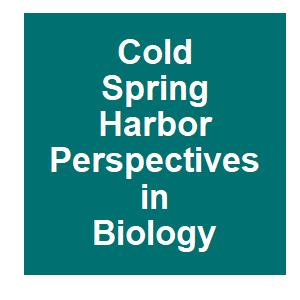
|
Sex chromosome driveHelleu, QG, P. R.; Montchamp-Moreau, C., Cold Spring Harbor Perspectives in Biology, 7:a017616. 2015.
Sex chromosome drivers are selfish elements that subvert Mendel's first law of segregation and therefore are over represented among the products of meiosis. The sex-biased progeny produced then fuels an extended genetic conflict between the driver and the rest of the genome. Many ... Keywords: conservation, CRISPR, gene drive synthetic, mammals, model, synthetic homing drive |

|
The next generation of rodent eradications: Innovative technologies and tools to improve species specificity and increase their feasibility on islandsCampbell, KJB, J.; Eason, C. T.; Glen, A. S.; Godwin, J.; Gould, F.; Holmes, N. D.; Howald, G. R.; Madden, F. M.; Ponder, J. B.; Threadgill, D. W.; Wegmann, A. S.; Baxter, G. S., Biological Conservation, 185:47-58. 2015.
Rodents remain one of the most widespread and damaging invasive alien species on islands globally. The current toolbox for insular rodent eradications is reliant on the application of sufficient anticoagulant toxicant into every potential rodent territory across an island. ... Keywords: conservation, CRISPR, gene drive synthetic, mammals, model, synthetic homing drive |

|
Detrimental effects of an autosomal selfish genetic element on sperm competitiveness in house miceSutter, AL, A. K., Proceedings of the Royal Society B-Biological Sciences, 282:1-8. 2015.
Female multiple mating (polyandry) is widespread across many animal taxa and indirect genetic benefits are a major evolutionary force favouring polyandry. An incentive for polyandry arises when multiple mating leads to sperm competition that disadvantages sperm from genetically ... Keywords: conservation, CRISPR, gene drive synthetic, mammals, model, synthetic homing drive |
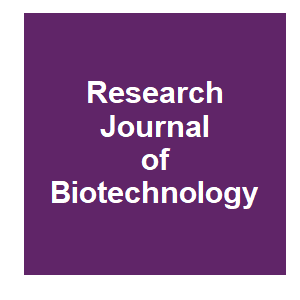
|
Presence of segregation distortion in sheepRaed, MA, Research Journal of Biotechnology, 10:87-98. 2015.
The main objective of this project was the investigation of presence of segregation distortion (SD) and description of other relevant parameters of multilocus genetics in Australian Merino sheep. The SD cases investigated three flocks of 98, 79 and 92 offspring and their ... Keywords: conservation, CRISPR, gene drive synthetic, mammals, model, synthetic homing drive |

|
Centromere strength provides the cell biological basis for meiotic drive and karyotype evolution in miceChmatal, L., S. I. Gabriel, G. P. Mitsainas, J. Martinez-Vargas, J. Ventura, J. B. Searle, R. M. Schultz and M. A. Lampson, Current Biology, 24:2295-2300. 2014.
Mammalian karyotypes (number and structure of chromosomes) can vary dramatically over short evolutionary time frames [1-3]. There are examples of massive karyotype conversion, from mostly telocentric (centromere terminal) to mostly metacentric (centromere internal), in 102-10 s ... Keywords: conservation, CRISPR, gene drive synthetic, mammals, model, synthetic homing drive |
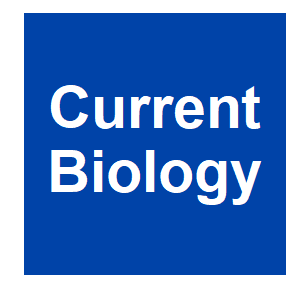
|
Centromere strength provides the cell biological basis for meiotic drive and karyotype evolution in miceChmatal, LG, S. I.; Mitsainas, G. P.; Martinez-Vargas, J.; Ventura, J.; Searle, J. B.; Schultz, R. M.; Lampson, M. A., Current Biology, 24:2295-2300. 2014.
Mammalian karyotypes (number and structure of chromosomes) can vary dramatically over short evolutionary time frames [1-3]. There are examples of massive karyotype conversion, from mostly telocentric (centromere terminal) to mostly metacentric (centromere internal), in 102-10 s ... Keywords: conservation, CRISPR, gene drive synthetic, mammals, model, synthetic homing drive |
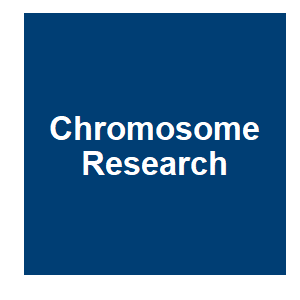
|
Multiple sex chromosomes in the light of female meiotic drive in amniote vertebratesPokorna, MA, M.; Kratochvil, L., Chromosome Research, 22:35-44. 2014.
It is notable that the occurrence of multiple sex chromosomes differs significantly between major lineages of amniote vertebrates. In this respect, birds are especially conspicuous, as multiple sex chromosomes have not been observed in this lineage so far. On the other hand, in ... Keywords: conservation, CRISPR, gene drive synthetic, mammals, model, synthetic homing drive |

|
Transmission distortion affecting human noncrossover but not crossover recombination: A hidden source of meiotic driveOdenthal-Hesse, LB, I. L.; Veselis, A.; Jeffreys, A. J.; May, C. A., PLOS Genetics, 10:e1004106. 2014.
Author Summary Meiosis is an essential feature of sexual reproduction that maintains chromosome number over generations. This specialised form of cell division creates gametes containing a single copy of each chromosome so that each parent contributes half their genetic ... Keywords: conservation, CRISPR, gene drive synthetic, mammals, model, synthetic homing drive |

|
Guidance on the environmental risk assessment of genetically modified animalsEuropean Food Safety Authority, European Food Safety Authority, 2013.
This document describes the six sequential steps for the ERA of GM animals, as indicated in Directive 2001/18/EC: (1) problem formulation including hazard and exposure identification; (2) hazard characterisation; (3) exposure characterisation; (4) risk characterisation; (5) risk ... Keywords: conservation, CRISPR, gene drive synthetic, mammals, model, synthetic homing drive |

|
Mechanism of meiotic drive in mammalsChmatal, LF, K.; Schultz, R. M.; Lampson, M. A., Molecular Biology of the Cell, 24:3775. 2013.
Meiotic drive is a phenomenon responsible for an unequal representation of alleles or whole chromosomes among gametes as a result of the mechanics of meiotic division (Sandler et Novitski 1957). When it drives segregation of Robertsonian translocations (Rb), a common chromosomal ... Keywords: conservation, CRISPR, gene drive synthetic, mammals, model, synthetic homing drive |

|
Evaluating the evidence for transmission distortion in human pedigreesMeyer, WKA, B.; Ober, C.; Ebner, T.; Tiemann-Boege, I.; Hudson, R. R.; Przeworski, M., Genetics, 191:215-232. 2012.
Children of a heterozygous parent are expected to carry either allele with equal probability. Exceptions can occur, however, due to meiotic drive, competition among gametes, or viability selection, which we collectively term "transmission distortion" (TD). Although there are ... Keywords: conservation, CRISPR, gene drive synthetic, mammals, model, synthetic homing drive |
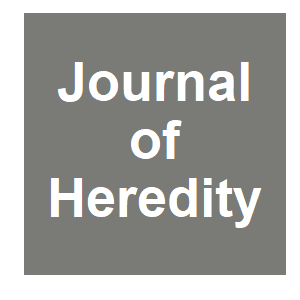
|
Segregation analysis of a sex ratio distortion locus in congenic miceCasellas, JF, C. R.; Verdugo, R. A.; Medrano, J. F., Journal of Heredity, 101:351-359. 2010.
The congenic HG.CAST-(D17Mit196-D17Mit190) (HQ17(hg/hg)) mouse strain showed a significant departure on the expected 50%/50% offspring sex ratio in more than 2400 progeny (55.7% females). The entire pedigree file included data from 13 nonoverlapping purebred generations and an ... Keywords: conservation, CRISPR, gene drive synthetic, mammals, model, synthetic homing drive |

|
Evolution of the Schlafen genes, a gene family associated with embryonic lethality, meiotic drive, immune processes and orthopoxvirus virulenceBustos, ON, S.; Ayers, G.; Casola, C.; Perez-Lamigueiro, M. A.; Chippindale, P. T.; Pritham, E. J.; de la Casa-Esperon, E., Gene, 447:11-Jan. 2009.
Genes of the Schlafen family, first discovered in mouse, are expressed in hematopoietic cells and are involved in immune processes. Previous results showed that they are candidate genes for two major phenomena: meiotic drive and embryonic lethality (DDK syndrome). However, these ... Keywords: conservation, CRISPR, gene drive synthetic, mammals, model, synthetic homing drive |
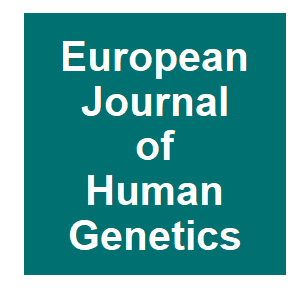
|
Assessment of transmission distortion on chromosome 6p in healthy individuals using tagSNPsSantos, PSCH, J.; Schlattmann, P.; Konig, I. R.; Ziegler, A.; Uchanska-Ziegler, B., European Journal of Human Genetics, 17:1182-1189. 2009.
The best-documented example for transmission distortion (TD) to normal offspring are the t haplotypes on mouse chromosome 17. In healthy humans, TD has been described for whole chromosomes and for particular loci, but multiple comparisons have presented a statistical obstacle in ... Keywords: conservation, CRISPR, gene drive synthetic, mammals, model, synthetic homing drive |

|
Broadening the application of evolutionarily based genetic pest managementGould, F, Evolution, 62:500-510. 2008.
Insect- and tick-vectored diseases such as malaria, dengue fever, and Lyme disease cause human suffering, and current approaches for prevention are not adequate. Invasive plants and animals such as Scotch broom, zebra mussels, and gypsy moths continue to cause environmental ... Keywords: conservation, CRISPR, gene drive synthetic, mammals, model, synthetic homing drive |

|
Meiotic drive at the Om locus in wild-derived inbred mouse strainsKim, KT, S.; Howard, I. B.; Bell, T. A.; Doherty, H. E.; Ideraabdullah, F.; Detwiler, D. A.; De Villena, F. P. M., Biological Journal of the Linnean Society, 84:487-492. 2005.
Meiotic drive is an evolutionary force in which natural selection is uncoupled from organismal fitness. Recently, it has been proposed that meiotic drive and genetic drift represent major forces in the evolution of the mammalian karyotype. Meiotic drive involves two types of ... Keywords: conservation, CRISPR, gene drive synthetic, mammals, model, synthetic homing drive |

|
Sex chromosome meiotic drive in hybrid males of the common shrew (Sorex araneus)Fedyk, SB, U.; Chetnicki, W., Folia Biologica-Krakow, 53:133-141. 2005.
Patterns of sex chromosome segregation in six homozygous males of the common Shrew (Sorex araneus LINNAEUS, 1758) belonging to two chromosomal races, as well as in 16 interracial hybrids were studied. I ascd on their karyotypes the hybrids can be subdivided into two groups: (a) ... Keywords: conservation, CRISPR, gene drive synthetic, mammals, model, synthetic homing drive |

|
Transmission ratio distortion in miceLyon, MF, Annual Review of Genetics, 37:393-408. 2003.
The most studied example of transmission ratio distortion (TRD) in mice is that of the t-complex. This is a variant-region of Chromosome 17 which exists as a polymorphism in wild mice. Males heterozygous for a t-haplotype and a normal Chr 17 transmit-the t haplotype to >50% of ... Keywords: conservation, CRISPR, gene drive synthetic, mammals, model, synthetic homing drive |

|
Reciprocal crossover asymmetry and meiotic drive in a human recombination hot spotJeffreys, AJN, R., Nature Genetics, 31:267-271. 2002.
Human DNA diversity arises ultimately from germline mutation that creates new haplotypes that can be reshuffled by meiotic recombination. Reciprocal crossover generates recombinant haplotypes but should not influence the frequencies of alleles in a population. We demonstrate ... Keywords: conservation, CRISPR, gene drive synthetic, mammals, model, synthetic homing drive |

|
X chromosome effect on maternal recombination and meiotic drive in the mousede la Casa-Esperon, EL-O, J. C.; de Villena, F. P. M.; Briscoe, T. L.; Malette, J. M.; Vaughan, J. E.; Morgan, K.; Sapienza, C., Genetics, 161:1651-1659. 2002.
We observed that maternal meiotic drive favoring the inheritance of DDK alleles at the Om locus on mouse chromosome 11 was correlated with the X chromosome inactivation phenotype of (C57BL/6Pgk1(a) X DDK)F-1 mothers. The basis for this unexpected observation appears to lie in the ... Keywords: conservation, CRISPR, gene drive synthetic, mammals, model, synthetic homing drive |

|
An unusual sex-determination system in South American field mice (genus Akodon): The role of mutation, selection, and meiotic drive in maintaining XY femalesHoekstra, HEH, J. M., Evolution, 55:190-197. 2001.
The mechanism of sex determination in mammals appears highly conserved: the presence of a Y chromosome triggers the male developmental pathway, whereas the absence of a Y chromosome results in a default female phenotype. However, if the Y chromosome fails to initiate the male ... Keywords: conservation, CRISPR, gene drive synthetic, mammals, model, synthetic homing drive |

|
A genetic test to determine the origin of maternal transmission ratio distortion: Meiotic drive at the mouse Om locusde Villena, FPMdlC-E, E.; Briscoe, T. L.; Sapienza, C., Genetics, 154:333-342. 2000.
We have shown previously that the progeny of crosses between heterozygous females and C57BL/G males show transmission ratio distortion at the Om locus on mouse chromosome 11. This result has been replicated in several independent experiments. Here we show that the distortion maps ... Keywords: conservation, CRISPR, gene drive synthetic, mammals, model, synthetic homing drive |
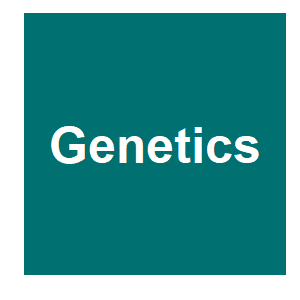
|
Heritability of the maternal meiotic drive system linked to Om and high-resolution mapping of the Responder locus in mousede Villena, FPMdlC-E, E.; Williams, J. W.; Malette, J. M.; Rosa, M.; Sapienza, C., Genetics, 155:283-289. 2000.
Matings between (C57BL/6 X DDK)F-1 females and C57BL/6 males result in a significant excess of offspring inheriting maternal DDK alleles in the central region of mouse chromosome 11 due to meiotic drive at the second meiotic division. We have shown previously that the locus ... Keywords: conservation, CRISPR, gene drive synthetic, mammals, model, synthetic homing drive |

|
Nonrandom segregation of the mouse univalent X chromosome: Evidence of spindle-mediated meiotic driveLeMaire-Adkins, RH, P. A., Genetics, 156:775-783. 2000.
A fundamental principle of Mendelian inheritance is random segregation of alleles to progeny; however, examples of distorted transmission either of specific alleles or of whole chromosomes have been described in a variety of species. In humans and mice, a distortion in chromosome ... Keywords: conservation, CRISPR, gene drive synthetic, mammals, model, synthetic homing drive |
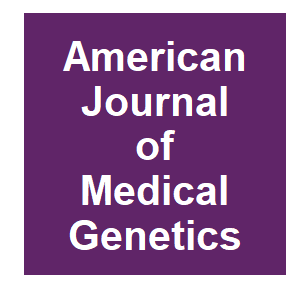
|
Transmission ratio distortion in females on chromosome 10p11-p15Paterson, ADP, A., American Journal of Medical Genetics, 88:657-661. 1999.
A number of recent reports of linkage of markers on chromosome 10p to schizophrenia, and evidence for linkage in one study to bipolar affective disorder, provide encouragement for psychiatric genetics, after nonreplication of linkage findings at other chromosomal regions, The ... Keywords: conservation, CRISPR, gene drive synthetic, mammals, model, synthetic homing drive |
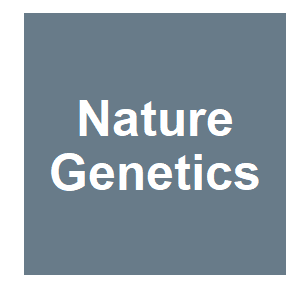
|
Transmission ratio distortion at the INS-IGF2 VNTREaves, IAB, S. T.; Forster, P.; Ferber, K. M.; Ehrmann, D.; Wilson, A. J.; Bhattacharyya, S.; Ziegler, A. G.; Brinkmann, B.; Todd, J. A., Nature Genetics, 22:324-325. 1999.
Transmission ratio distortion (TRD) is defined as a statistically significant departure from mendelian transmission. So far, evidence of this in humans has been limited or controversial1,2,3,4, and the few established examples involve chromosome rearrangements in lower ... Keywords: conservation, CRISPR, gene drive synthetic, mammals, model, synthetic homing drive |
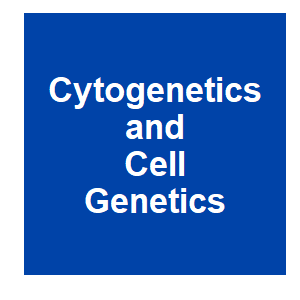
|
Meiotic drive favors Robertsonian metacentric chromosomes in the common shrew (Sorex araneus, Insectivora, Mammalia)Wyttenbach, AB, P.; Hausser, J., Cytogenetics and Cell Genetics, 83:199-206. 1998.
Meiotic drive has attracted much interest because it concerns the robustness of Mendelian segregation and its genetic and evolutionary stability. We studied chromosomal meiotic drive in the common shrew (Sorex araneus, Insectivora, Mammalia), which exhibits one of the most ... Keywords: conservation, CRISPR, gene drive synthetic, mammals, model, synthetic homing drive |

|
Segregation distortion in myotonic dystrophyMagee, ACH, A. E., Journal of Medical Genetics, 35:1045-1046. 1998.
Myotonic dystrophy (DM) is an autosomal dominant disease which, in the typical pedigree, shows a three generation anticipation cascade. This results in infertility and congenital myotonic dystrophy (CDM) with the disappearance of DM in that pedigree. The concept of segregation ... Keywords: conservation, CRISPR, gene drive synthetic, mammals, model, synthetic homing drive |

|
Identification of the t complex-encoded cytoplasmic dynein light chain Tctex1 in inner arm I1 supports the involvement of flagellar dyneins in meiotic driveHarrison, AO-C, P.; King, S. M., Journal of Cell Biology, 140:1137-1147. 1998.
The cytoplasmic dynein light chain Tctex1 is a candidate for one of the distorter products involved in the non-Mendelian transmission of mouse t haplotypes. It has been unclear, however, how the t-specific mutations in this protein, which is found associated with cytoplasmic ... Keywords: conservation, CRISPR, gene drive synthetic, mammals, model, synthetic homing drive |

|
Identification of a male meiosis-specific gene, Tcte2, which is differentially spliced in species that form sterile hybrids with laboratory mice and deleted in t chromosomes showing meiotic driveBraidotti, GB, D. P., Developmental Biology, 186:85-99. 1997.
Tcte2 (t complex testes expressed 2) is a male meiosis-specific gene that maps to band 3.3 of mouse chromosome 17. Two distinct male fertility defects, hybrid sterility and transmission ratio distortion, have previously been mapped to this region. Hybrid sterility arises in ... Keywords: conservation, CRISPR, gene drive synthetic, mammals, model, synthetic homing drive |
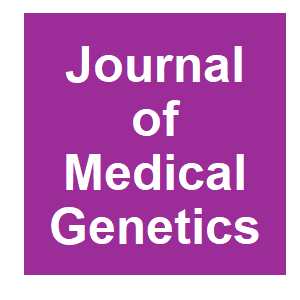
|
Non-Mendelian transmission at the Machado-Joseph disease locus in normal females: Preferential transmission of alleles with smaller CAG repeatsRubinsztein, DCL, J., Journal of Medical Genetics, 34:234-236. 1997.
Machado-Joseph disease (MJD), also known as spinocerebellar ataxia type 3, is a neurodegenerative disorder which is associated with a CAG repeat expansion in the MJD1 gene on chromosome 14q32.1. A recent study reported an excess of transmission of disease chromosomes relative to ... Keywords: conservation, CRISPR, gene drive synthetic, mammals, model, synthetic homing drive |
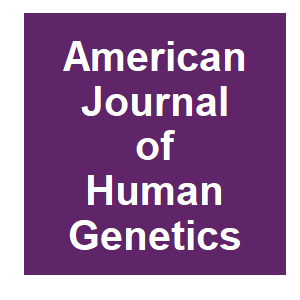
|
Meiotic drive at the myotonic dystrophy and the cone-rod dystrophy loci on chromosome 19q13.3Inglehearn, CFG, C. Y., American Journal of Human Genetics, 60:1562-1563. 1997.
The apparently conflicting observations of a high new mutation rate at the myotonic dystrophy (DM) locus on chromosome 19q13.3 and of a founder effect for DM chromosomes led researchers to invoke the influence of meiotic drive at this locus. Two studies (Carey et al. 1994; ... Keywords: conservation, CRISPR, gene drive synthetic, mammals, model, synthetic homing drive |

|
Epistatic control of non-mendelian inheritance in mouse interspecific crossesMontagutelli, XT, R.; Nadeau, J. H., Genetics, 143:1739-1752. 1996.
Strong deviation of allele frequencies from Mendelian inheritance favoring Mus spretus-derived alleles has been described previously for X-linked loci in four mouse interspecific crosses. We reanalyzed data for three of these crosses focusing on the location of the gene(s) ... Keywords: conservation, CRISPR, gene drive synthetic, mammals, model, synthetic homing drive |

|
Analysis of meiotic segregation, using single-sperm typing: Meiotic drive at the myotonic dystrophy locusLeeflang, EPM, M. S.; Arnheim, N., American Journal of Human Genetics, 59:896-904. 1996.
Meiotic drive at the myotonic dystrophy (DM) locus has recently been suggested as being responsible for maintaining the frequency, in the human population, of DM chromosomes capable of expansion to the disease state. In order to test this hypothesis, we have studied samples of ... Keywords: conservation, CRISPR, gene drive synthetic, mammals, model, synthetic homing drive |
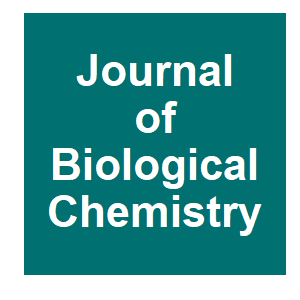
|
The mouse t-complex-encoded protein Tctex-1 is a light chain of brain cytoplasmic dyneinKing, SMD, J. F.; Benashski, S. E.; Lye, R. J.; PatelKing, R. S.; Pfister, K. K., Journal of Biological Chemistry, 271:32281-32287. 1996.
Mammalian brain cytoplasmic dynein contains three light chains of M(r) = 8,000, 14,000, add 22,000 (King, S. M., Barbarese, E., Dillman, J. F., III, Patel-King, R. S., Carson, J. H., and Pfister, K. Kr (1996) J. Biol. Chem. 271, 19358-19366). Peptide sequence data (16/16 residues ... Keywords: conservation, CRISPR, gene drive synthetic, mammals, model, synthetic homing drive |

|
Segregation distortion of the CTG repeats at the myotonic dystrophy locusChakraborty, RS, D. N.; Deka, R.; Yu, L. M.; Shriver, M. D.; Ferrell, R. E., American Journal of Human Genetics, 59:109-118. 1996.
Myotonic dystrophy (DM), an autosomal dominant neuromuscular disease, is caused by a CTG-repeat expansion, with affected individuals having greater than or equal to 50 repeats of this trinucleotide, at the DMPK locus of human chromosome 19q13.3. Severely affected individuals die ... Keywords: conservation, CRISPR, gene drive synthetic, mammals, model, synthetic homing drive |
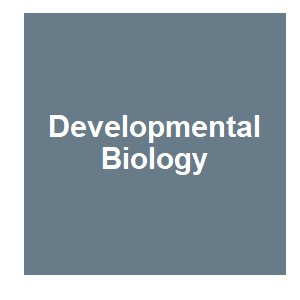
|
Tctex2 – a sperm tail surface protein mapping to the t-complexHuw, LYG, A. S.; Willison, K.; Artzt, K., Developmental Biology, 170:183-194. 1995.
Transmission ratio distortion (TRD) in mouse t-haplotypes remains the most significant example of meiotic drive in vertebrates. While the underlying mechanism that fuels it is still mysterious, TRD is clearly a complex multigene phenomenon. The characterization of Tctex2 ... Keywords: conservation, CRISPR, gene drive synthetic, mammals, model, synthetic homing drive |

|
Meiotic drive an Myotonic Dystrophy – ReplyCarey, NJ, K.; Nokelainen, P.; Peltonen, L.; Savontaus, M. L.; Juvonen, V.; Anvret, M.; Grandell, U.; Chotai, K.; Robertson, E.; Middletonprice, H.; Malcolm, S., Nature Genetics, 10:133-133. 1995.
Myotonic dystrophy (DM) is a trinucleotide disorder and in sub-clinical individuals there is considerable variation in the length of the CTG repeat. Two groups have recently analysed the patterns of segregation of different sized alleles at this locus and both report an excess of ... Keywords: conservation, CRISPR, gene drive synthetic, mammals, model, synthetic homing drive |

|
Meiotic drive at the myotonic dystrophy locusGennarelli, MD, B.; Baiget, M.; Martorell, L.; Novelli, G., Journal of Medical Genetics, 31:980-980. 1994.
The mutation underlying myotonic dystrophy (DM, MIM* 160900) is the expansion of a CTG trinucleotide repeat sequence at the 3' untranslated region of a protein kinase gene (MT-PK).' The kinetics of this process is influenced by the sex of the transmitting parent and size of the ... Keywords: conservation, CRISPR, gene drive synthetic, mammals, model, synthetic homing drive |

|
The evolution of lethals in the t-haplotype system of the mouseCharlesworth, B, Proceedings of the Royal Society B-Biological Sciences, 258:101-107. 1994.
The evolution of lethal haplotypes in the t-haplotype segregation distortion system of Mus is examined by mathematical and computer models. The models assume that there is reproductive compensation for the loss of lethal embryos, such that the net reproductive success of a female ... Keywords: conservation, CRISPR, gene drive synthetic, mammals, model, synthetic homing drive |

|
Meiotic drive at the Myotonic Dystrophy locusCarey, NJ, K.; Nokelainen, P.; Peltonen, L.; Savontaus, M. L.; Juvonen, V.; Anvret, M.; Grandell, U.; Chotai, K.; Robertson, E.; Middletonprice, H.; Malcolm, S., Nature Genetics, 6:117-118. 1994.
Myotonic dystrophy (DM) is the most common form of adult muscular dystrophy (average incidence 1 in 8,000) 1 • It is an autosomal dominant trait with multisystemic involvement and marked clinical variability. Anticipation, in which symptom severity increases and age of onset ... Keywords: conservation, CRISPR, gene drive synthetic, mammals, model, synthetic homing drive |
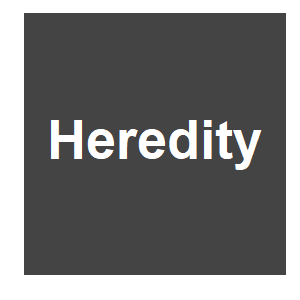
|
Bewildering Bs – An impression of the 1st B-chromosome conferenceBeukeboom, LW, Heredity, 73:328-336. 1994.
Ever since their first discovery B chromosomes have attracted attention. Why are they so appealing? The standard chromosomes of an organism are A chromosomes; B chromosomes are extra to this normal complement. In the B chromosome 'bible' (Jones & Rees, 1982) Bs are defined as ... Keywords: conservation, CRISPR, gene drive synthetic, mammals, model, synthetic homing drive |
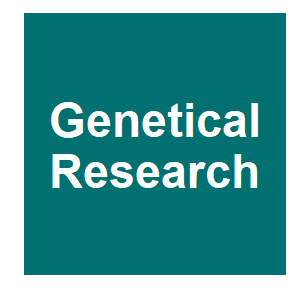
|
Meiotic drive on aberrant Chromosome-1 in the mouse is determined by a linked distorterAgulnik, SIS, I. D.; Orlova, G. V.; Ruvinsky, A. O., Genetical Research, 61:91-96. 1993.
An aberrant chromosome 1 carrying an inverted fragment with two amplified DNA regions was isolated from wild populations of Mus musculus. Meiotic drive favouring the aberrant chromosome was demonstrated for heterozygous females. Its cause was preferential passage of aberrant ... Keywords: conservation, CRISPR, gene drive synthetic, mammals, model, synthetic homing drive |

|
Evolution of the mouse t-haplotype – Recent and worldwide introgression to Mus musculusMorita, TK, H.; Murata, K.; Nozaki, M.; Delarbre, C.; Willison, K.; Satta, Y.; Sakaizumi, M.; Takahata, N.; Gachelin, G.; Matsushiro, A., Proceedings of the National Academy of Sciences of the United States of America, 89:6851-6855. 1992.
Mouse t haplotypes are variants of chromosome 17, consisting of four inversions. Despite the homozygous lethality and pleiotropic effect on embryonic development, sperm production, and recombination, they have widely spread in natural populations of the house mouse (10-40% in ... Keywords: conservation, CRISPR, gene drive synthetic, mammals, model, synthetic homing drive |

|
Meiotic drive for the aberrant Chromosome-1 in mice is determined by a linked distorterAgulnik, SIS, I. D.; Orlova, G. V.; Ruvinsky, A. O., Genetika, 28:47-57. 1992.
AN aberrant chromosome 1 carrying an inverted fragment with two amplified DNA regions was isolated from natural populations of Mus musculus. A meiotic drive favouring the aberrant chromosome was previously demonstrated for heterozygous females. The cause for this was the ... Keywords: conservation, CRISPR, gene drive synthetic, mammals, model, synthetic homing drive |
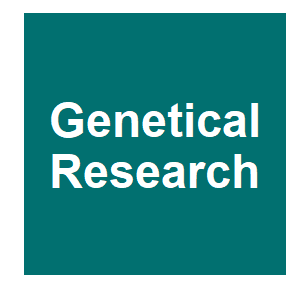
|
Meiotic drive of t-haplotypes – chromosome segregation in mice with tertiary trisomyAgulnik, AIA, S. I.; Ruvinsky, A. O., Genetical Research, 57:51-54. 1991.
The properties of the t haplotypes, specific mutant states of the proximal region of chromosomes 17 in the house mouse, are of continuing interest. One such property is increased transmission of the t haplotype by heterozygous t/+ males to offspring. Using the reciprocal ... Keywords: conservation, CRISPR, gene drive synthetic, mammals, model, synthetic homing drive |
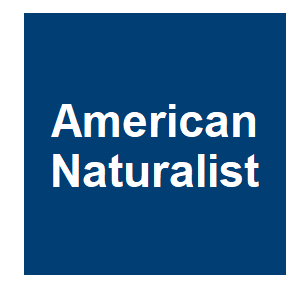
|
The Genetic Basis of Transmission-Ratio Distortion and Male Sterility Due to the t ComplexLyon, MF, American Naturalist, 137:349-358. 1991.
The abnormal transmission ratios observed in male mice heterozygous for a complete t haplotype have been shown by breeding studies to be due to three or more distorter genes acting on a responder gene. The action of the t form of the responder is relatively resistant to this ... Keywords: conservation, CRISPR, gene drive synthetic, mammals, model, synthetic homing drive |

|
Behavioral reduction in the transmission of deleterious t-haplotypes by wild house miceLenington, SH, I. L., The American Naturalist, 137:366-378. 1991.
About 25% of wild house mice are heterozygous (+/t) for a variable recessive haplotype of the T locus. Although t haplotypes are highly deleterious when homozygous, they are maintained in wild mouse populations because they are associated with transmission-ratio distortion in ... Keywords: conservation, CRISPR, gene drive synthetic, mammals, model, synthetic homing drive |

|
Molecular and chromosomal studies on the origin of t-haplotypes in miceHammer, MF, American Naturalist, 137:359-365. 1991.
Mouse t haplotypes are variant forms of the proximal third of chromosome 17 that enhance their representation in the gene pool by means of a male-specific transmission-ratio distortion. As with other systems of meiotic drive, they are maintained as independent genetic entities by ... Keywords: conservation, CRISPR, gene drive synthetic, mammals, model, synthetic homing drive |
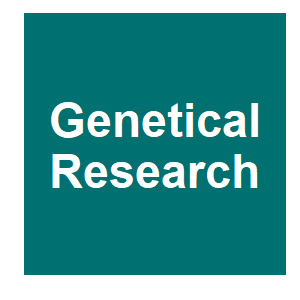
|
Meiotic drive in female mice heterozygous for the HSR inserts on Chromosome-1Agulnik, SIA, A. I.; Ruvinsky, A. O., Genetical Research, 55:97-100. 1990.
Chromosome 1 with one or two long insertions has been previously found in natural mouse populations. The inheritance of chromosome 1 with two insertions from the Yakutsk population is analysed in this paper. It was demonstrated that heterozygous females transmit this chromosome ... Keywords: conservation, CRISPR, gene drive synthetic, mammals, model, synthetic homing drive |
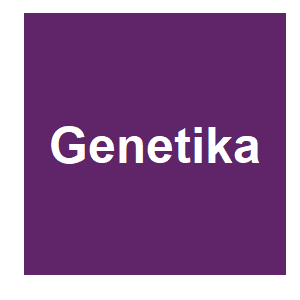
|
Meiotic drive of the aberrant Chromosome-1 in the house mouseAgulnik, SIA, A. I.; Ruvinsky, A. O., Genetika, 26:664-669. 1990.
Animals with aberrant chromosome 1 carrying one or two large insertions were earlier described in natural populations of Mus musculus. In the present work, inheritance of the aberrant chromosome 1 from the Yakutsk population was investigated. It was shown that 80-85% of the ... Keywords: conservation, CRISPR, gene drive synthetic, mammals, model, synthetic homing drive |

|
Meiotic drive in the sex-chromosome system of the varying lemming, Dicrostonyx torquatus Pall (Rodentia, Microtinae)Gileva, EA, Heredity, 59:383-389. 1987.
In the varying lemming, numerous fertile XY females occur regularly due to the X-linked mutation (X*). Their frequency both in natural populations and laboratory colonies turned out to be about twice higher than that expected under random segregation of heterochromosomes in both ... Keywords: conservation, CRISPR, gene drive synthetic, mammals, model, synthetic homing drive |
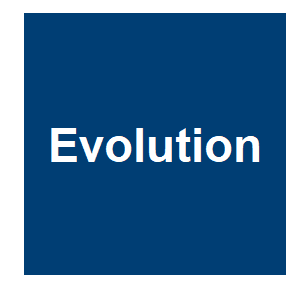
|
Analysis of a general population genetic model of meiotic driveHartl, DL, Evolution, 24:538-545. 1970.
The purpose of this article is to present the detailed solution of a model of meiotic drive which Lewontin (1968) has suggested would be helpful in understanding the evo- lutionary dynamics of the t-alleles in the house mouse. Because mice tend to breed in small endogamous family ... Keywords: conservation, CRISPR, gene drive synthetic, mammals, model, synthetic homing drive |

Contact
David O’Brochta
Foundation for the
National Institutes of Health
geneconvenevi@fnih.org
RSS

